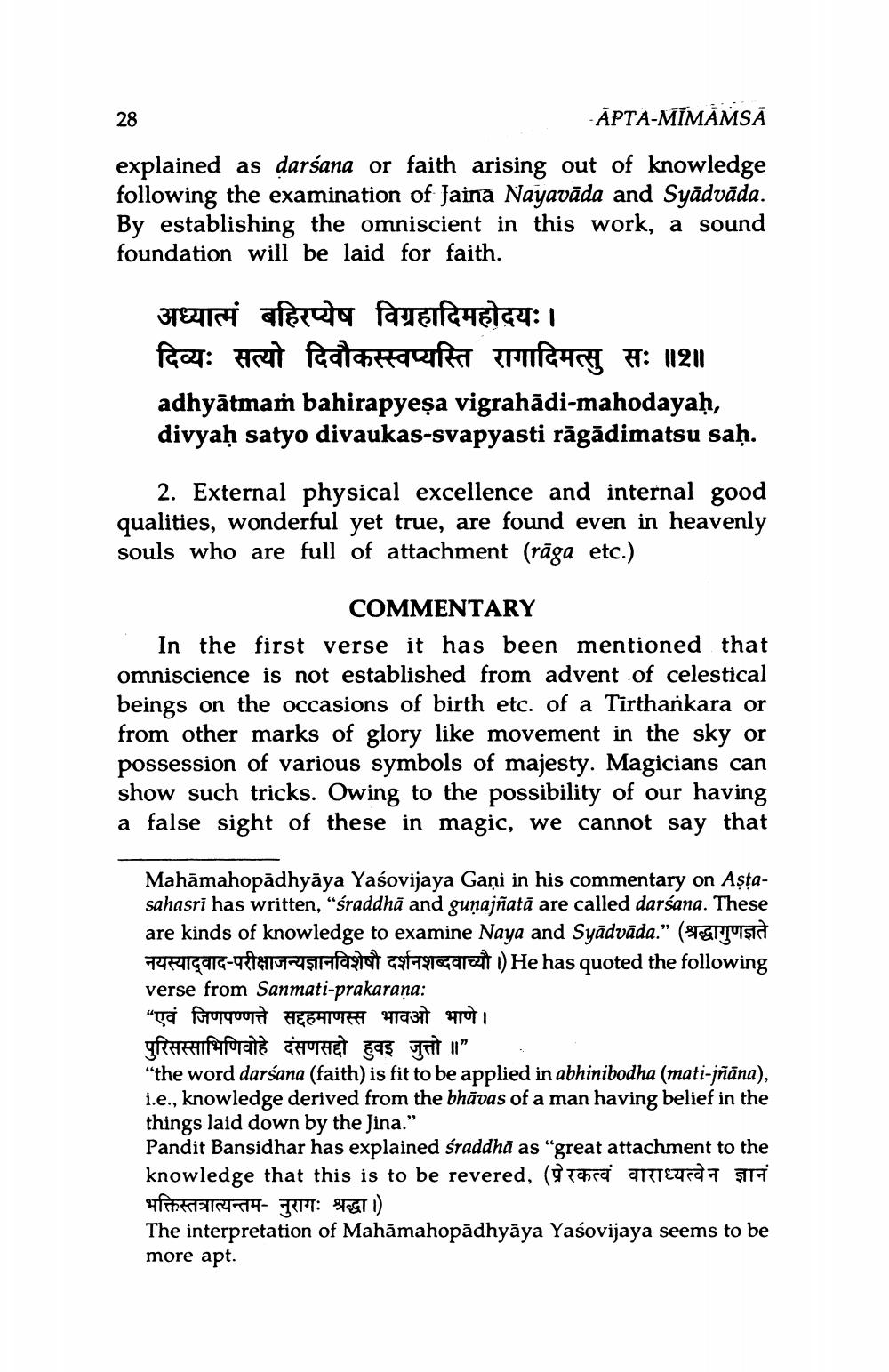________________
28
ĀPTA-MIMĀMSĀ
explained as darśana or faith arising out of knowledge following the examination of Jaina Nayavāda and Syādvāda. By establishing the omniscient in this work, a sound foundation will be laid for faith.
अध्यात्म बहिरप्येष विग्रहादिमहोदयः। दिव्यः सत्यो दिवौकस्स्वप्यस्ति रागादिमत्सु सः ॥2॥ adhyātmam bahirapyeșa vigrahādi-mahodayaḥ, divyaḥ satyo divaukas-svapyasti rāgādimatsu saḥ.
2. External physical excellence and internal good qualities, wonderful yet true, are found even in heavenly souls who are full of attachment (rāga etc.)
COMMENTARY In the first verse it has been mentioned that omniscience is not established from advent of celestical beings on the occasions of birth etc. of a Tīrthankara or from other marks of glory like movement in the sky or possession of various symbols of majesty. Magicians can show such tricks. Owing to the possibility of our having a false sight of these in magic, we cannot say that
Mahāmahopadhyāya Yaśovijaya Gani in his commentary on Astasahasri has written, “sraddhā and gunajñatā are called darśana. These are kinds of knowledge to examine Naya and Syādvāda." (Gllusid turligar-hi shfaqet asfalt) He has quoted the following verse from Sanmati-prakarana: "एवं जिणपण्णत्ते सद्दहमाणस्स भावओ भाणे। पुरिसस्साभिणिवोहे दंसणसद्दो हुवइ जुत्तो ॥" "the word darśana (faith) is fit to be applied in abhinibodha (mati-jñāna), i.e., knowledge derived from the bhāvas of a man having belief in the things laid down by the Jina." Pandit Bansidhar has explained sraddhā as "great attachment to the knowledge that this is to be revered. (प्रेरकत्वं वाराध्यत्वेन ज्ञानं भक्तिस्तत्रात्यन्तम- नुरागः श्रद्धा।) The interpretation of Mahāmahopādhyāya Yaśovijaya seems to be more apt.




